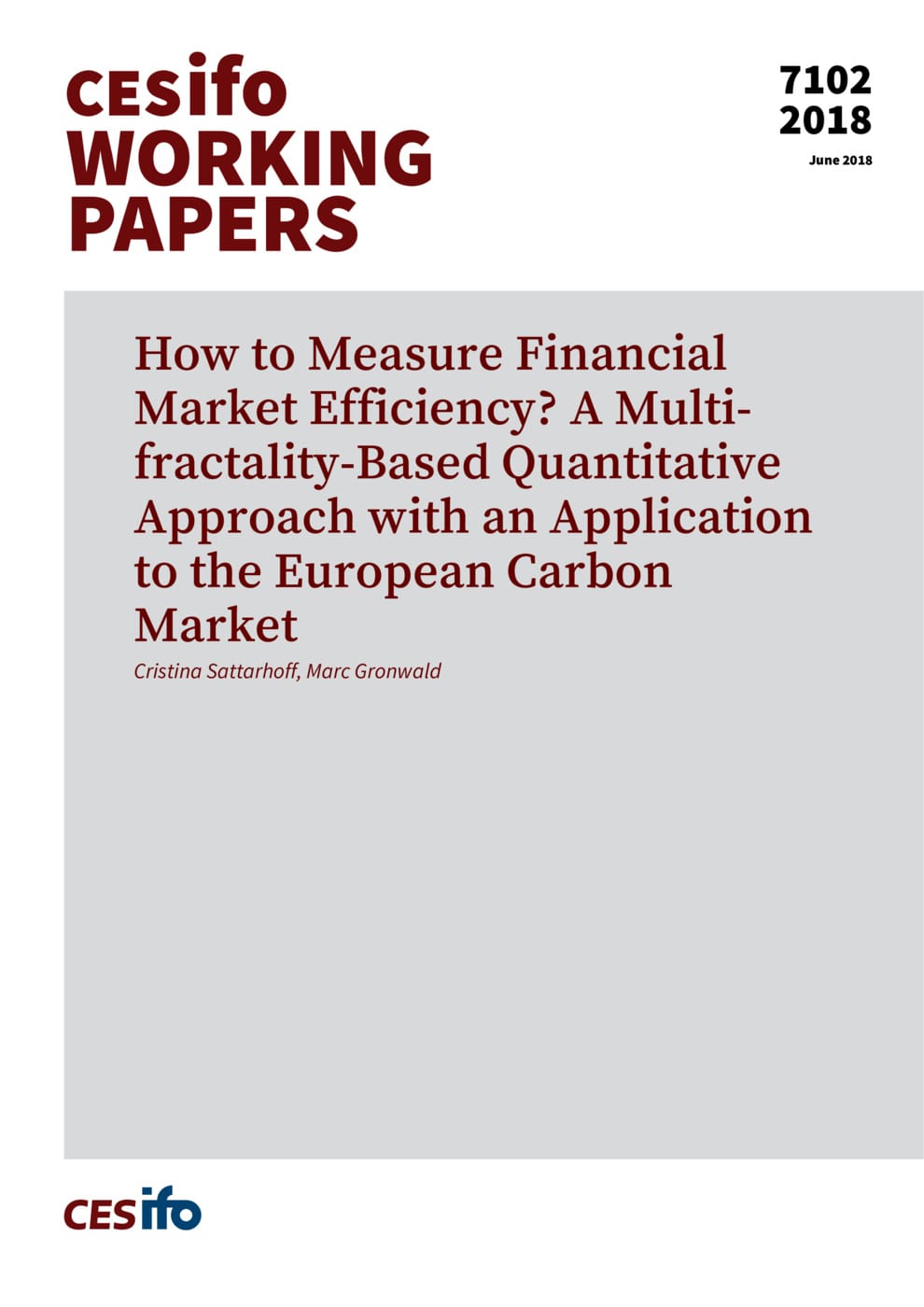How to Measure Financial Market Efficiency? A Multifractality-Based Quantitative Approach with an Application to the European Carbon Market
CESifo, Munich, 2018
CESifo Working Paper No. 7102

This paper proposes a new measure for the evaluation of financial market efficiency, the so-called intermittency coefficient. This is a multifractality measure that can quantify the deviation from a random walk within the framework of the multifractal random walk model by Bacry et al. (2001b). While the random walk corresponds to the most genuine form of market efficiency, the larger the value of the intermittency coefficient is, the more inefficient a market would be. In contrast to commonly used methods based on Hurst exponents, the intermittency coefficient is a more powerful tool due to its well-established inference apparatus based on the generalised method of moments estimation technique. In an empirical application using data from the largest currently existing market for tradable pollution permits, the European Union Emissions Trading Scheme, we show that this market becomes more efficient over time. In addition, the degree of market efficiency is overall similar to that for the US stock market; for one sub-period, the market efficiency is found to be higher. While the first finding is anticipated, the second finding is noteworthy, as various observers expressed concerns with regard to the information efficiency of this newly established artificial market.
Empirical and Theoretical Methods
Energy and Climate Economics